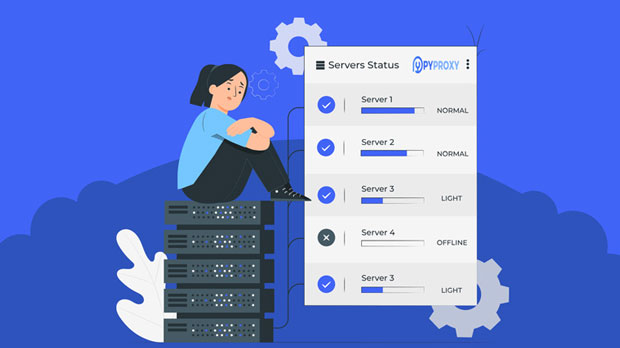In today’s digital landscape, privacy and security are paramount. One technology that is frequently used to enhance user anonymity online is the SOCKS5 protocol. The SOCKS5 protocol is a versatile and powerful method of routing internet traffic through a proxy server, making it harder for third parties to track online activities. However, when it comes to utilizing this protocol, a common question arises: does a Proxy Web Browser support SOCKS5? This question has significant implications for those seeking privacy and security, as it directly influences the ability to effectively conceal one’s online presence. In this article, we will explore the capabilities of Proxy Web Browsers with regard to SOCKS5 protocol support, examining their function, benefits, limitations, and how users can determine compatibility. Understanding Proxy Web Browsers and SOCKS5Before diving into whether Proxy Web Browsers support SOCKS5, it is essential to first understand what these two terms mean and how they work together. - Proxy Web Browser: A Proxy Web Browser is a browser that connects to the internet through a proxy server. This server acts as an intermediary between the user’s device and the websites they access, providing a layer of anonymity. By masking the user’s original IP address, it can offer privacy, security, and the ability to access restricted content. - SOCKS5 Protocol: SOCKS5 (Socket Secure version 5) is a protocol designed to route network traffic through a proxy server. It is an improvement over the earlier SOCKS4, offering additional features like support for UDP, authentication, and enhanced security. sock s5 proxies work by routing traffic at the transport layer, which means they do not interfere with higher-level protocols such as HTTP or FTP.Now, with these definitions in mind, let’s explore whether Proxy Web Browsers can effectively support SOCKS5.How SOCKS5 Protocol Works with Proxy ServersSOCKS5 proxies are more sophisticated than the traditional HTTP or HTTPS proxies. When using a socks5 proxy, all types of traffic are routed through the server, not just web browsing data. This makes it more versatile, supporting applications like email clients, instant messengers, and file-sharing programs. The protocol also adds encryption capabilities, making the connection more secure than its predecessors. One of the standout features of SOCKS5 is its ability to support both TCP and UDP connections, offering greater flexibility. This is particularly useful for applications that require real-time data transfer, such as video streaming or gaming. Additionally, SOCKS5 proxies can handle IPv6 traffic, which is becoming increasingly important as the internet transitions to newer technologies.Does Proxy Web Browser Support SOCKS5?Now, the central question: do Proxy Web Browsers support SOCKS5? The answer is not as straightforward as a simple yes or no. It depends largely on the specific browser and the configuration of the proxy server.Most modern Proxy Web Browsers, such as those using Chromium or Firefox engines, can be configured to work with SOCKS5 proxies. These browsers allow users to set up the proxy settings manually or through browser extensions. However, the level of support can vary. For example, while Google Chrome itself does not natively support SOCKS5 proxies, it can be configured to use them by modifying system-level proxy settings or by using a third-party extension. Mozilla Firefox, on the other hand, offers built-in SOCKS5 support, allowing users to configure it directly within the browser’s network settings. This makes Firefox a more straightforward choice for users looking to use SOCKS5 proxies in their web browsing experience.Benefits of Using SOCKS5 with Proxy Web BrowsersThere are several key benefits to using SOCKS5 with Proxy Web Browsers, particularly for privacy-conscious individuals:- Enhanced Security: SOCKS5 proxies add a layer of security by encrypting traffic. This encryption makes it difficult for third parties to intercept or view the data being sent, thus providing better privacy protection for users. - Bypass Geo-Restrictions: SOCKS5 allows users to bypass geographic restrictions by masking their true IP address. This is especially useful for accessing content that is limited to certain countries or regions.- Anonymity: By using a SOCKS5 proxy with a web browser, users can hide their real IP address. This anonymity can be beneficial in preventing websites from tracking user behavior and ensuring that sensitive information remains secure.- Better Compatibility: SOCKS5 can be used for more than just web browsing. Its support for different types of traffic (like P2P, gaming, and file-sharing) makes it highly versatile and ideal for users who want a complete proxy solution for their online activities.Limitations of SOCKS5 in Proxy Web BrowsersWhile the SOCKS5 protocol offers many advantages, it is not without its limitations:- Configuration Complexity: Setting up SOCKS5 proxies with some Proxy Web Browsers may require technical knowledge, especially for those unfamiliar with proxy server configurations. It might involve using system-level settings or adding third-party extensions, which could be challenging for novice users.- No Built-in Encryption: Although SOCKS5 can provide better security than other proxy types, it does not offer end-to-end encryption by default. Users who require a high level of encryption for sensitive data might need to consider additional security measures, such as using a VPN alongside the SOCKS5 proxy.- Performance Issues: In some cases, using a SOCKS5 proxy may introduce latency or slow down internet speed, depending on the quality of the proxy server. This is especially noticeable in high-bandwidth activities such as video streaming or online gaming.How to Set Up SOCKS5 Proxy with a Proxy Web BrowserSetting up SOCKS5 with Proxy Web Browsers is relatively simple, especially for those familiar with network settings. Here are the general steps:1. Choose a SOCKS5 Proxy Provider: First, you will need to subscribe to a SOCKS5 proxy service. Make sure to select a reliable provider with strong security features.2. Configure Browser Settings: - Firefox: Go to the ‘Options’ menu, then ‘Network Settings,’ and select ‘Manual proxy configuration.’ Enter the SOCKS5 proxy details. - Chrome: Since Chrome does not have native SOCKS5 support, you may need to use command-line switches or a third-party extension to set up the proxy.3. Test the Connection: After configuring your browser, test the connection to ensure that the proxy is working as expected. You can use an IP checker tool to verify whether your IP address has been masked.ConclusionIn conclusion, Proxy Web Browsers do support SOCKS5 protocol, but the level of support and ease of configuration can vary. While browsers like Firefox offer built-in support for SOCKS5, others, like Chrome, require additional setup. The use of SOCKS5 in a Proxy Web Browser can enhance security, provide anonymity, and allow users to bypass geo-restrictions, but it also comes with some limitations, including potential configuration complexity and performance issues. Users interested in leveraging SOCKS5 with their Proxy Web Browser should carefully consider these factors and ensure that the browser and proxy provider they choose are compatible with their needs.
Jul 07, 2025



































































